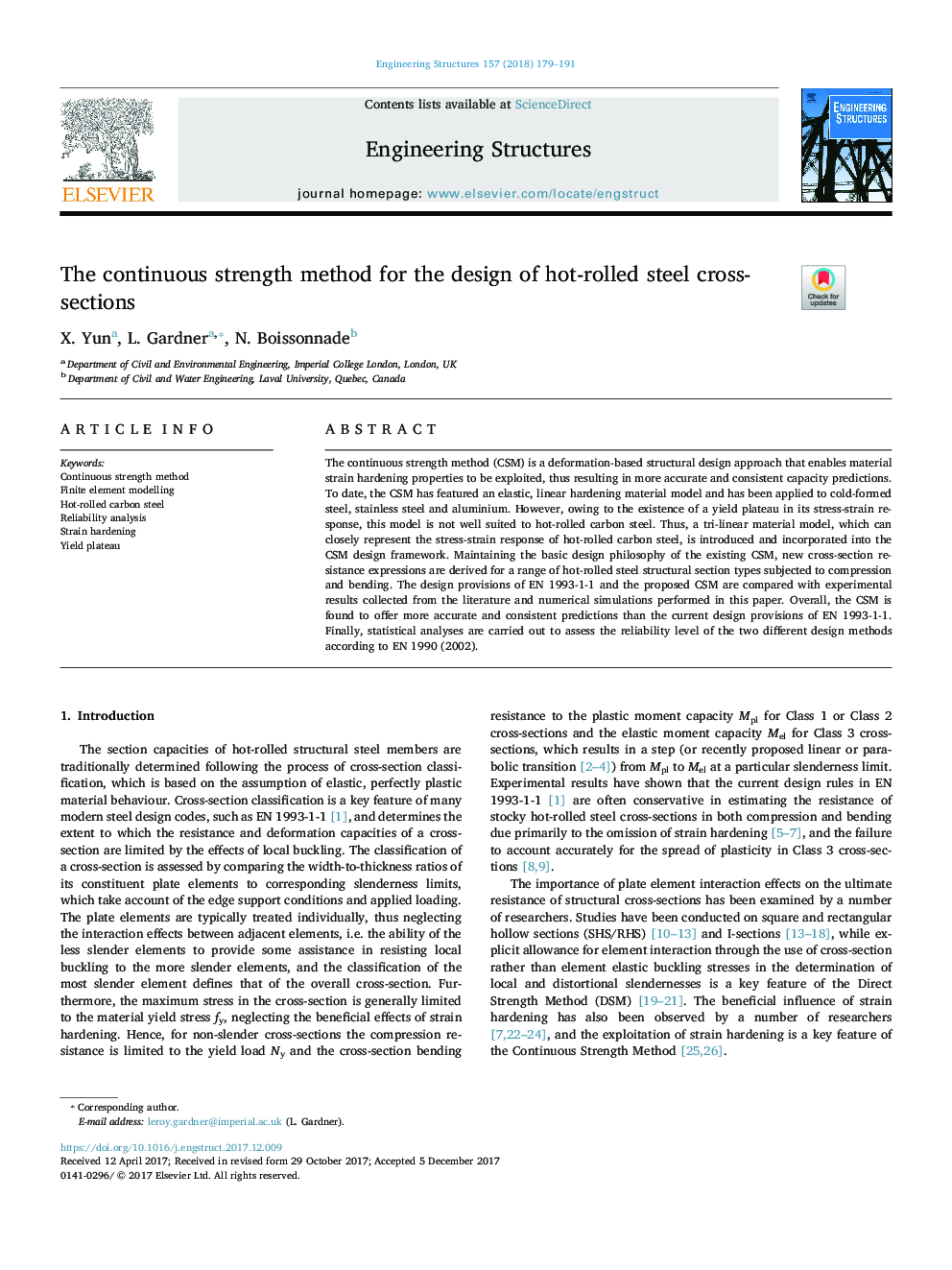| Article ID | Journal | Published Year | Pages | File Type |
|---|---|---|---|---|
| 6738725 | Engineering Structures | 2018 | 13 Pages |
Abstract
The continuous strength method (CSM) is a deformation-based structural design approach that enables material strain hardening properties to be exploited, thus resulting in more accurate and consistent capacity predictions. To date, the CSM has featured an elastic, linear hardening material model and has been applied to cold-formed steel, stainless steel and aluminium. However, owing to the existence of a yield plateau in its stress-strain response, this model is not well suited to hot-rolled carbon steel. Thus, a tri-linear material model, which can closely represent the stress-strain response of hot-rolled carbon steel, is introduced and incorporated into the CSM design framework. Maintaining the basic design philosophy of the existing CSM, new cross-section resistance expressions are derived for a range of hot-rolled steel structural section types subjected to compression and bending. The design provisions of EN 1993-1-1 and the proposed CSM are compared with experimental results collected from the literature and numerical simulations performed in this paper. Overall, the CSM is found to offer more accurate and consistent predictions than the current design provisions of EN 1993-1-1. Finally, statistical analyses are carried out to assess the reliability level of the two different design methods according to EN 1990 (2002).
Keywords
Related Topics
Physical Sciences and Engineering
Earth and Planetary Sciences
Geotechnical Engineering and Engineering Geology
Authors
X. Yun, L. Gardner, N. Boissonnade,
